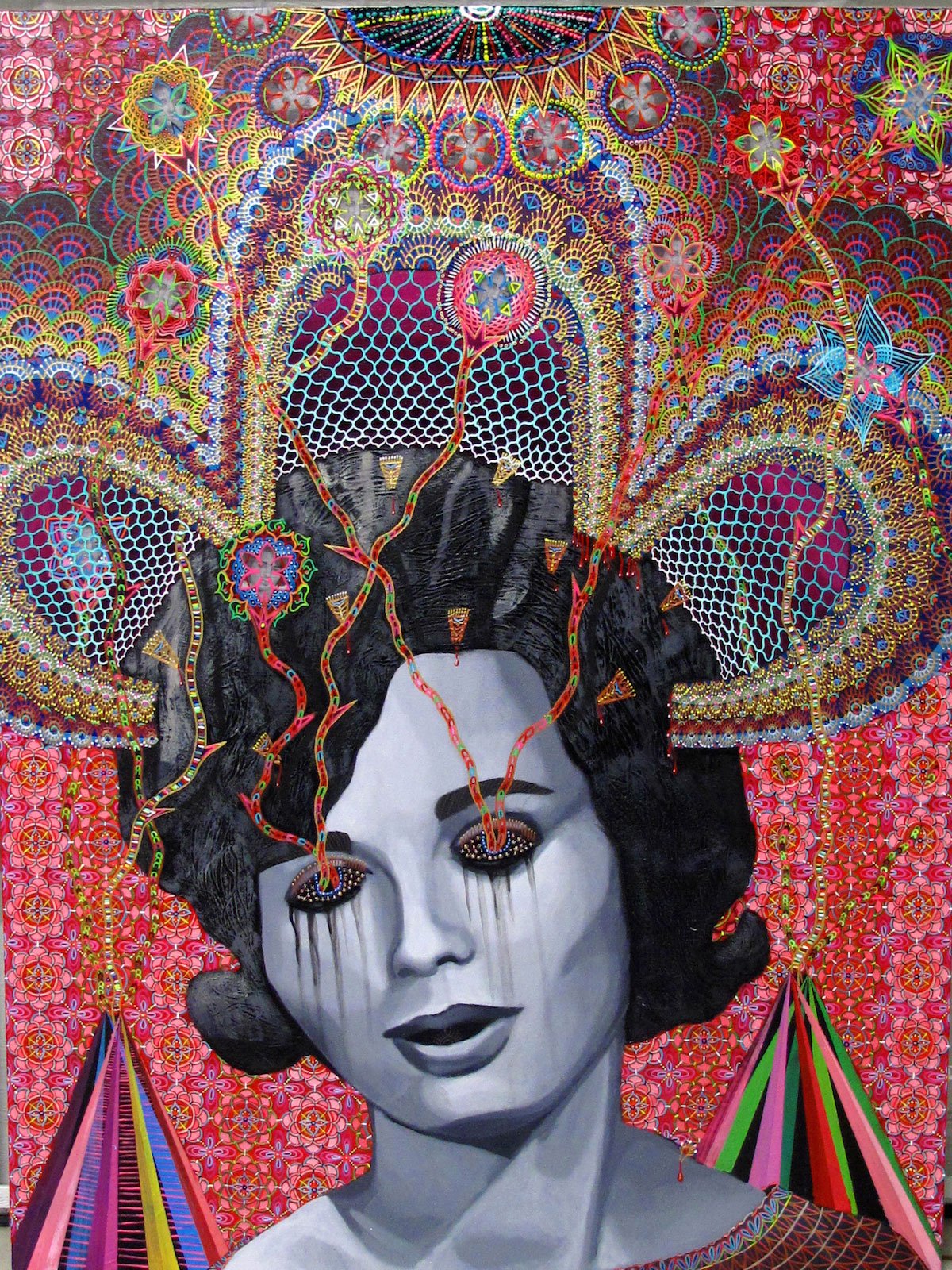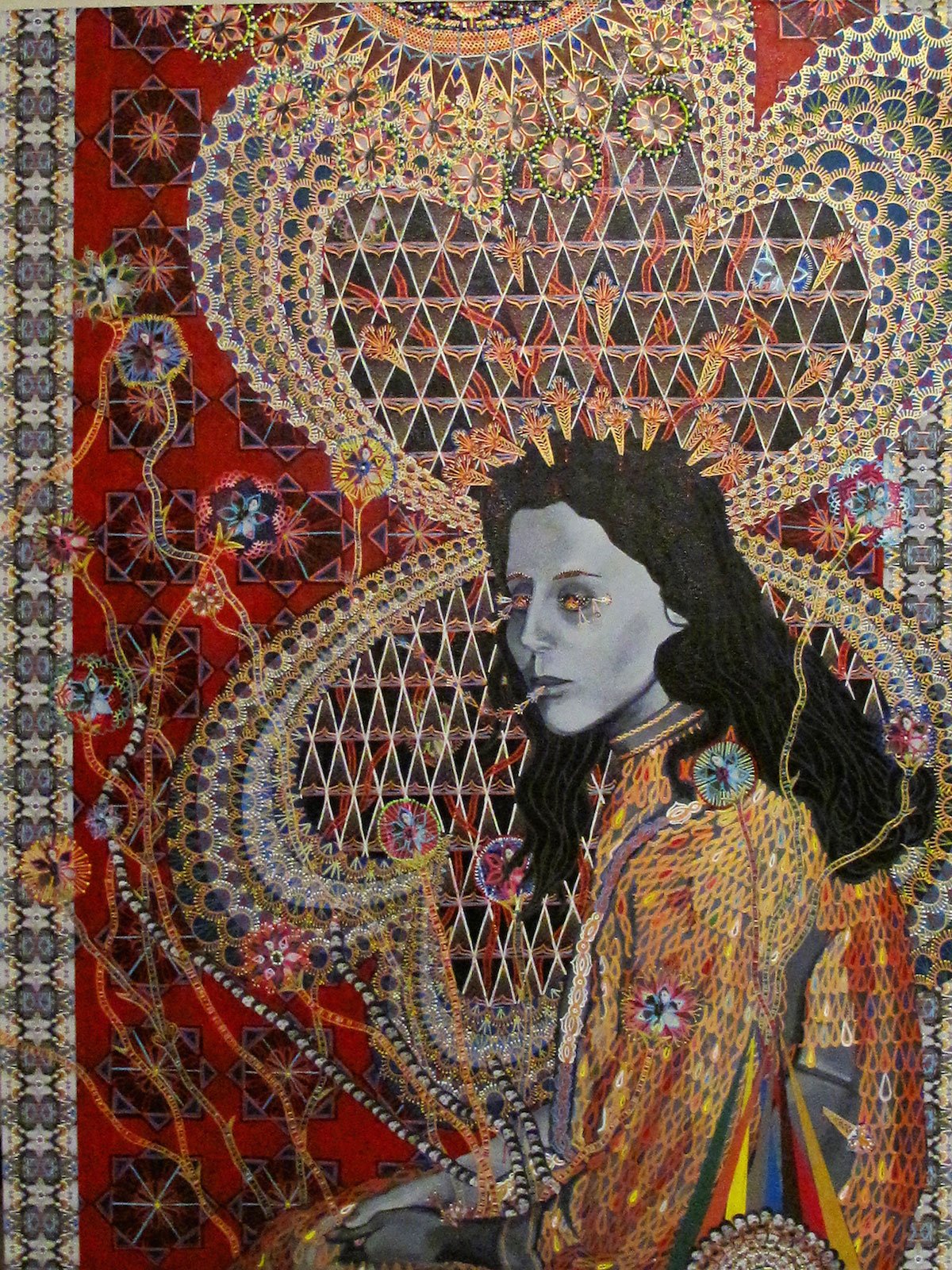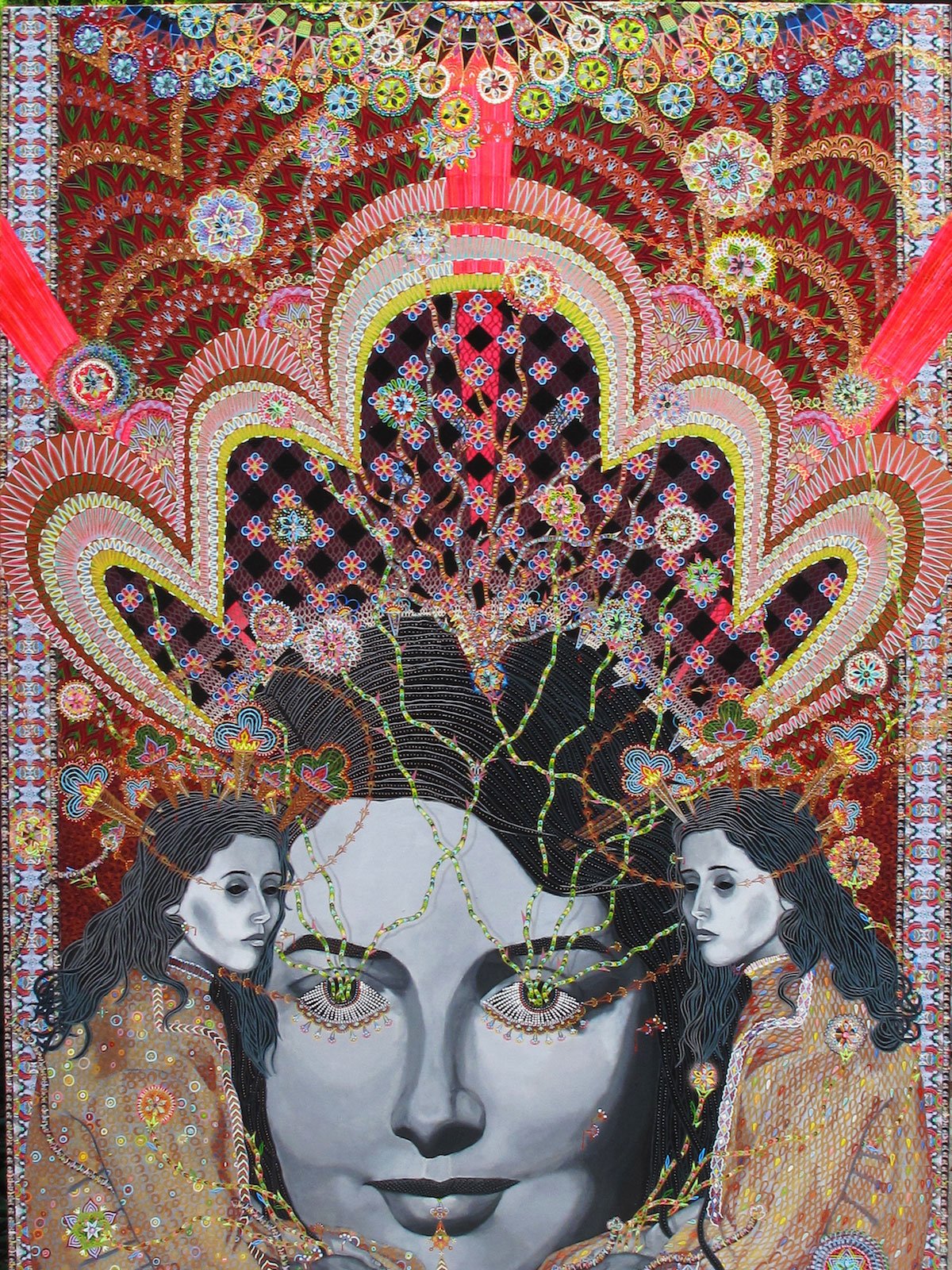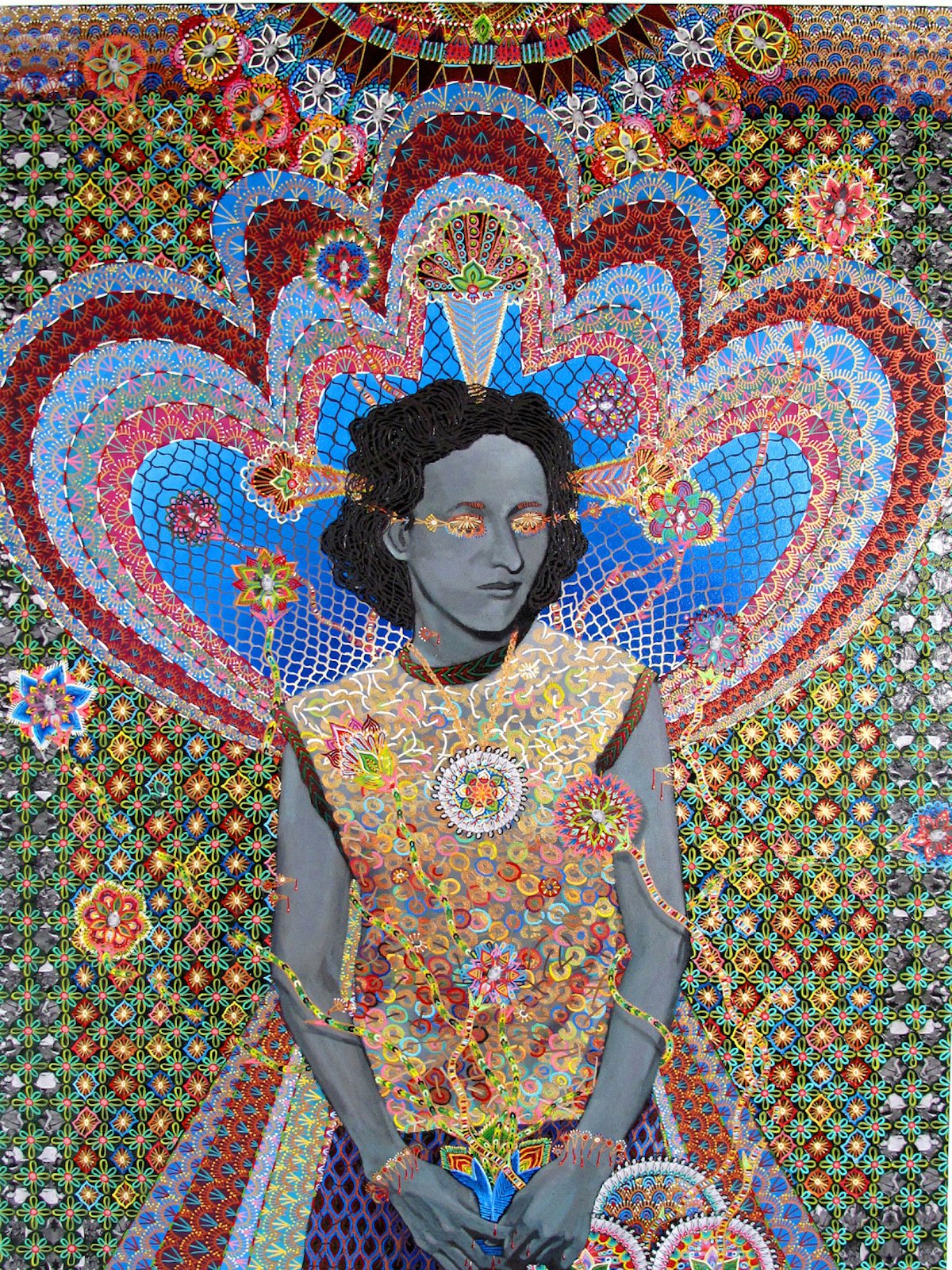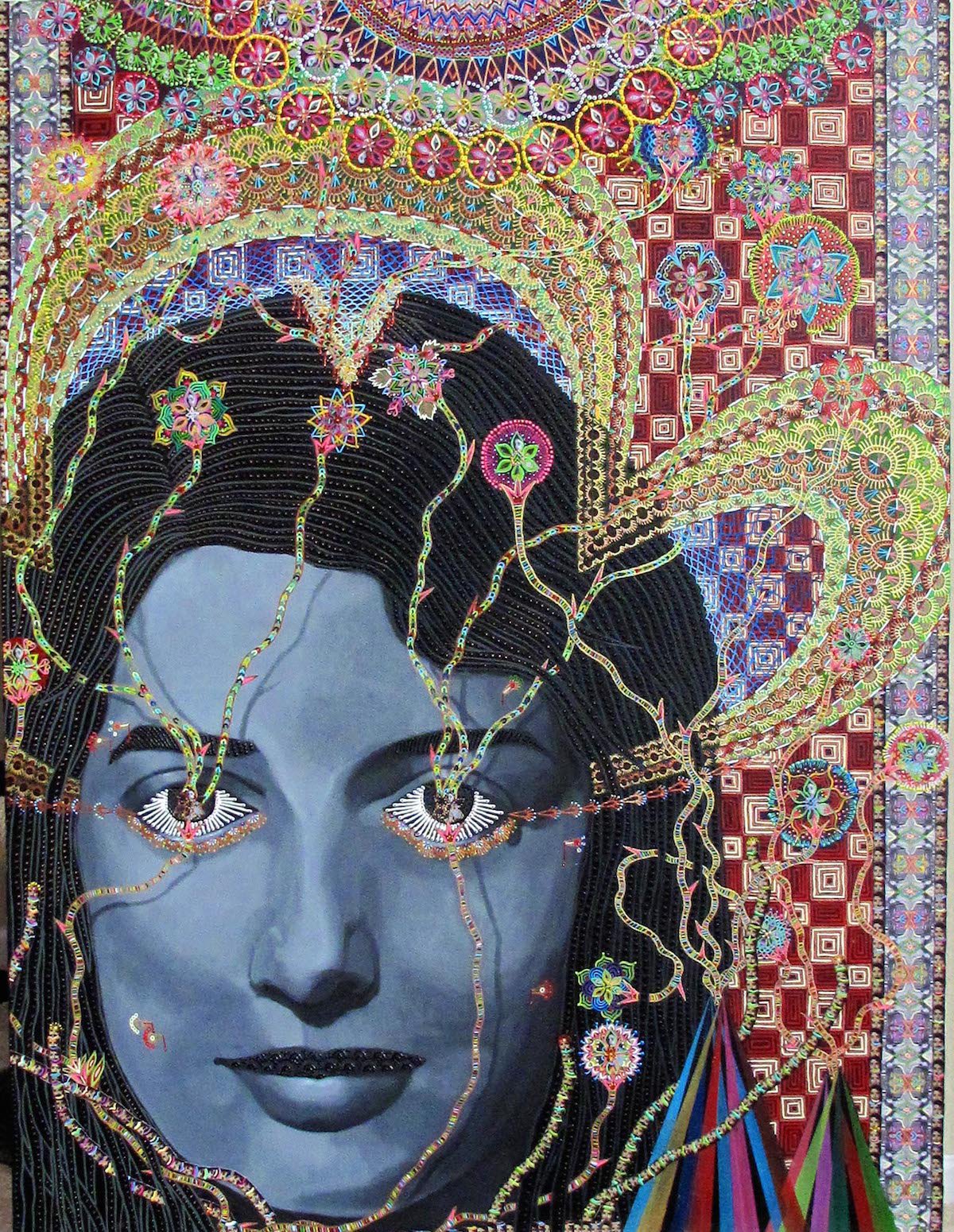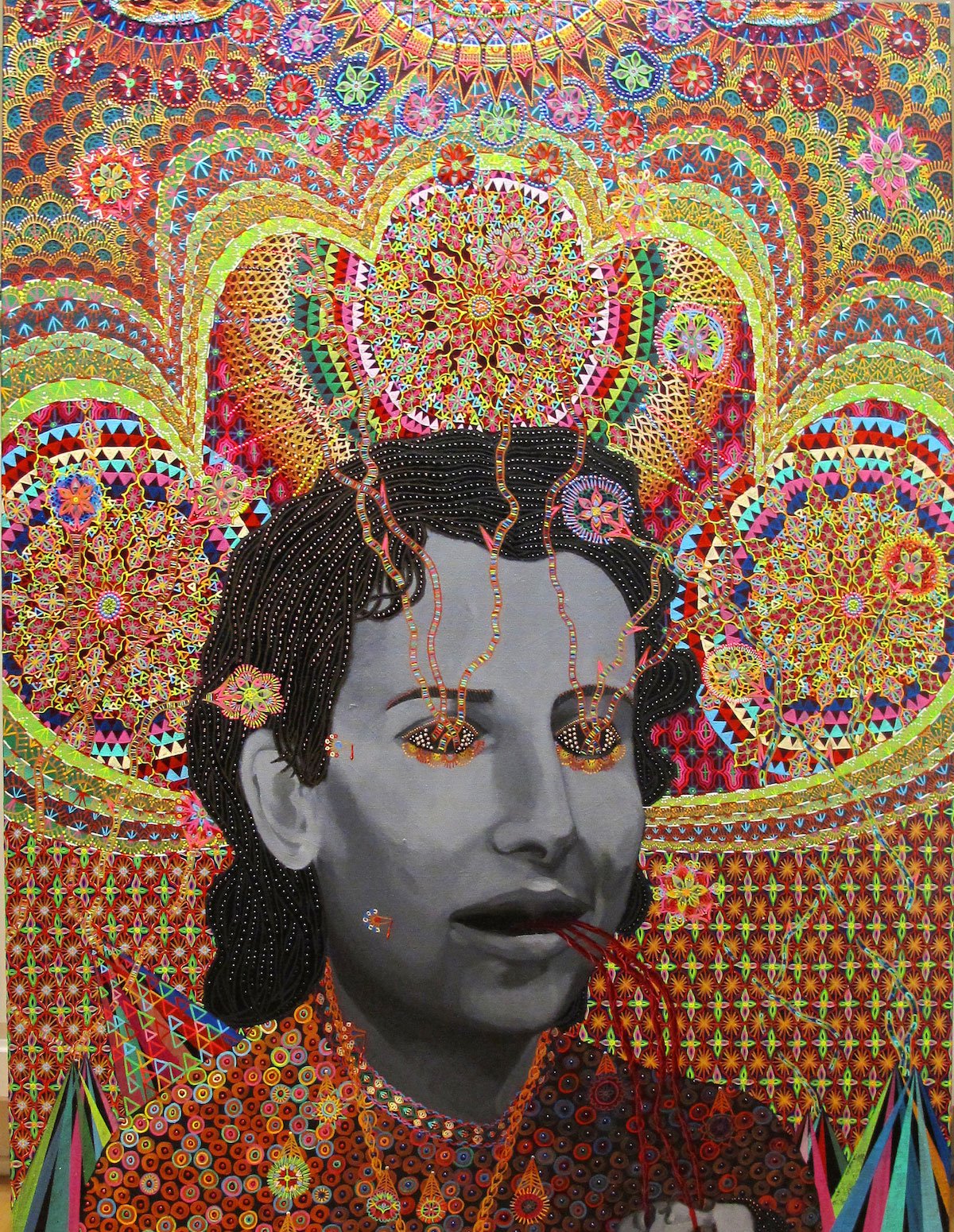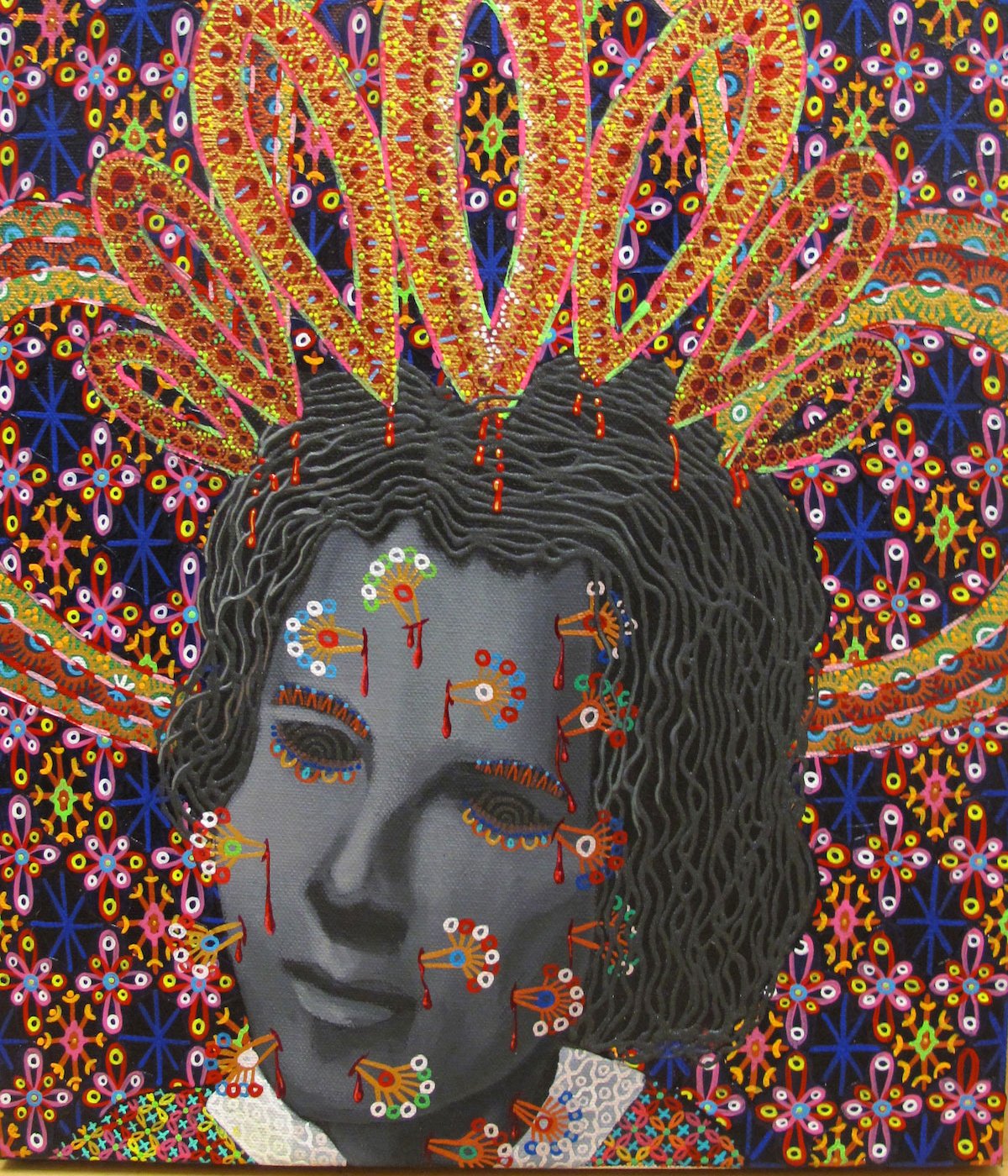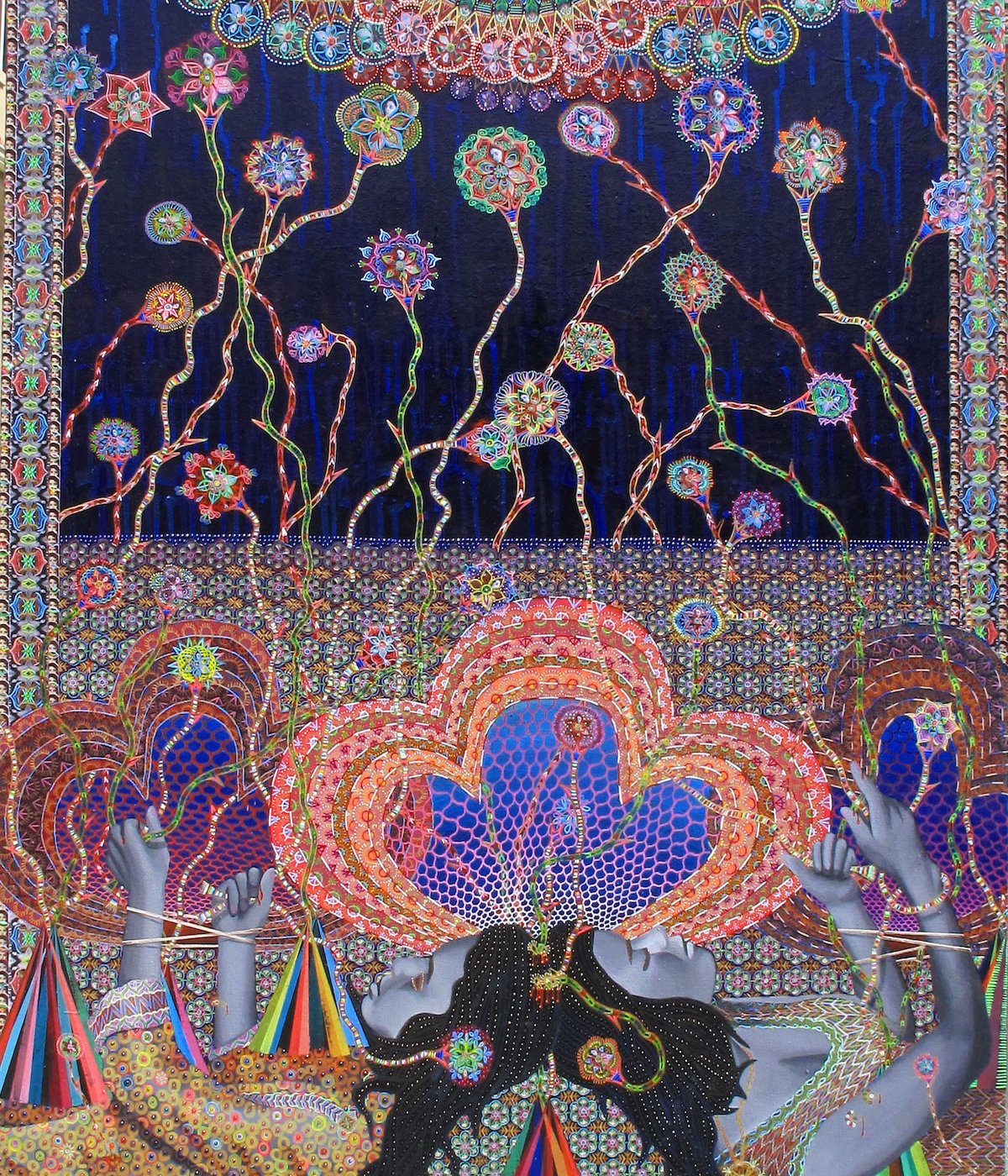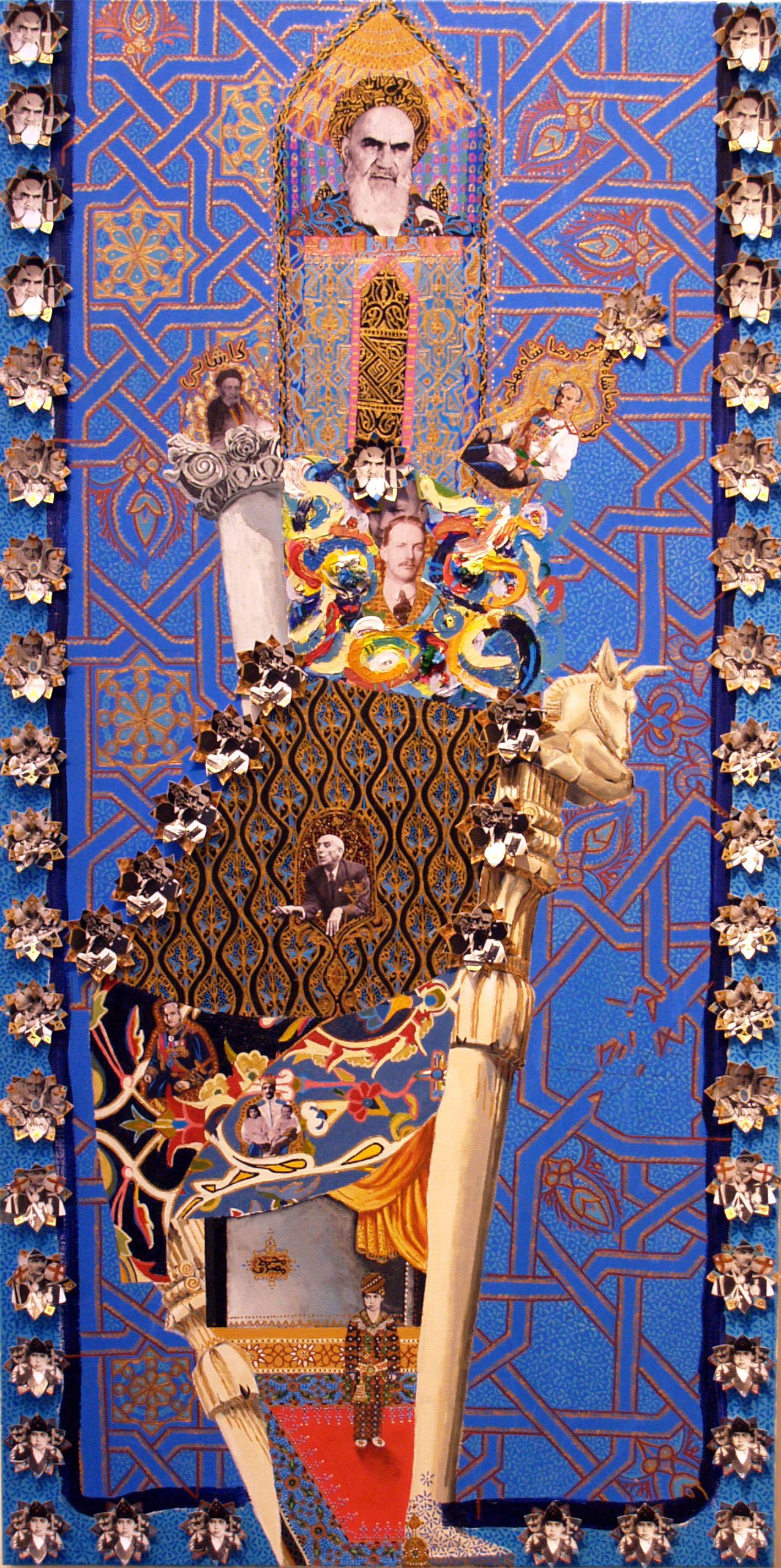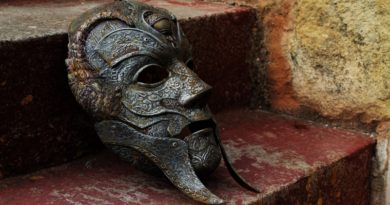Past Tense: Asad Faulwell's shrines for the forgotten - "Les Femmes D'Alger"
Asad Faulwell is not afraid of hard work. When he takes on a subject, such as the women involved in the Battle of Algiers, he goes all in, investing the time and labor required to realise his vision, the way he imagined it. It is that hard working quality that gives his works the dazzling amount of details and amazing intricacy. When we got the chance to chat with him, we talked about his first international solo show “Les Femmes D’Alger”…
Interview byYetkin Nural
Originally published in Bant Mag. No: 33, September 2014 issue.
“Les Femmes D’Alger” has a certain context and backstory that has inspired you to create the series. Can you tell us a bit about this story and why did you decide to create art on this subject?
The original inspiration for the series was Gillo Pontecorvo’s film The Battle of Algiers. When I saw the movie in 2007 I was already making work to do with post-colonial movements and The Algerian War of Independence was of great interest to me. In particular I was interested in the scene in the film in which three young women carry bombs through checkpoints and plant them in the French quarter, killing French civilians. The movie made a lasting impact on me in terms of the way it dealt with colonialism, violence and gender inequality. After watching the film I knew I wanted to make work about this subject matter but I didn’t have enough information to get started. I spent two or three years researching the people involved in The Battle of Algiers, especially the women. What I found was that most of the women involved were captured by the French, tortured and convicted of murder. They all went to prison before being pardoned at the end of the war. After being released and returning to Algeria they were excluded from government positions in the now independent Algeria, as were most women.
I found it very interesting that these women were used as soldiers then discarded when they were no longer of use. Much in the same way the French put the Algerian Zouave on the front lines in battle only to deny them equal rights after they had used them. I think these women thought they were staking their claim for women in the new Algeria by helping to gain independence.
Many of the photos I found during this research process became the source material for the current series. I wanted to make commentary on war and violence and the way that these most brutal and inhumane of all actions are glorified. I wanted to comment on gender inequality, especially in the colonized world. I also wanted to reference art history. The title of the works “Les Femmes D’Alger” references the prior series of works by Delacroix and Picasso. Where Picasso and Delacroix depicted anonymous women in an exoticised and eroticised scene, I wanted to depict specific Algerian women as strong, complicated warriors.
Your work has a very specific style. Bright colors, very intricate, ornamented backgrounds and pale, grey & blue skin, almost dead like faces of women. How did you end up developing this unique aesthetic visual language? How was the research process? Were there any specific information or stories that has transformed the way you think and work?
The research process was long and slow. I read “A Savage War of Peace” by Alistair Horne, which mentioned the women very briefly. I read “The Wretched of the Earth” by Frantz Fanon. I found two academic articles that mentioned some of the women by name and once I had their names I was able to find some photos of them. I also found a book written in French by one of the female combatants, Danielle Minne. This book contained the names of many women and several good quality photos. The main thing I learned as I went through the process was how complicated this story was and how morally ambiguous it was. The more I read about it the more I became interested in the psychology of these women. I wanted to know more about them as individuals and what they felt rather then just gathering information about their actions during and after the war. This is why I started to paint the tears coming from there eyes. I wanted to find a way to express the tremendous pain they must have all dealt with.
I chose to use such a detailed and ornamented style because I wanted to make the paintings look like religious shrines. I wanted to reference alter paintings, palaces and holy buildings. I had to learn to paint in this very controlled and detail oriented way. My work before this body of work was much looser and far less detailed. In the beginning I had a very hard time working in such a controlled and precise way but over time I began to love working that way. The paintings develop very slowly and this gives me time to really think about what I am doing. In terms of color, I have always loved bright color. I am very interested in the way that color can convey emotion or can dazzle the eye of the viewer. I chose the grey/blue skin because I was working from mostly old black and white photographs. I also see the figures more as statues then as real living people. I see them as relics or monuments to women who existed in history. I think painting them in this ashy black and white makes them seem like they belong in history.
All this beautiful, intricate ornamented collage paintings also hint long and hard hours of work. So I wonder, what is the process of creating a work for you? Where do you start, how do you end?
The work takes a very long time to make. A very large piece can take up to nine months to make. I usually start with a blank black canvas. I draw out the positioning of the figures first and then I start laying out where I want certain patterns and other elements to be. There are several steps to creating the final result. I have to cut out 1000’s of small pieces of paper that are then glued down on the canvas and painted over. I have to paint the figures and there clothes. Then I add in the flowers and other small elements. Once everything is painted I will go in and add the final touches, which consist of small bits of collage and pins. The pins are used to create the eyes and hair and stuck through the surface of the canvas. The final step is to paint small designs on the pinheads and on the small bits of collage. It is an extremely slow and painstaking process but in the end it is worth it.
Again, looking at your body of work, one cannot help but notice two recurring focal points: eyes, and for the lack of a better phrase, “aura – hats” that these figures have. What are the stories behind these, what do they mean to you?
The eyes are often left empty with rings of gold and flowers coming out of them or have painted pins stuck through them. The eyes are left empty because I want these figures to be viewed as hollow statues or empty vessels. The eyes are the body part that conveys the most emotion, it is perhaps the most vulnerable part of human being. I use the eyes to convey sadness and other emotions. The aura are supposed to reference crowns or halos. They are meant to show that these women are important, that they are figures to be paid attention to and perhaps even revered.
Your work often has visual references to religious artworks and the history of the Middle East. Obviously in “Les Femmes D’Alger”, but in your previous works as well. What draws your attention and fuels your creativity about these subjects?How about the technical side, which mediums you use, what do you work with?
I use a lot of Golden brand acrylic fluid paints. They have a liquid consistency that works very well for what I do. They also make some really bright florescent colors that I like to use. I use some collage as well as pins and oil paint for certain parts of the paintings. They are all painted on canvas.
I am half Iranian so I always had some interest in the history of The Middle East. Although I was raised in a very non-religious household and am myself not at all religious I do admire the beauty of religious architecture and art. I would say my interest reached a higher level while I was a student at UC-Santa Barbara. While at UCSB I took many classes in the Middle East Studies department. I learned a lot about the history of the region, the culture and the religions. This provided the bases of knowledge that I used to create most the work I made from 2007 to today.
Talking about inspirations, what are you feeding on generally? Books, music, other art works and artists?
I listen to a lot of music. I usually listen to music while I work. I tend to like albums that I can listen to from start to finish. The Mars Volta, Miles Davis, Mica Levi, Jonny Greenwood and Portishead are some of the things I have been listening to recently. Reading can also be a source of inspriation, the last thing I read that left a lasting impression on me was The Trail by Kafka. I also read a lot of history books to gather information on the work I am making. Looking at other artists work is also a great source of inspiration. I tend to like work that is very different from my own because I have a hard time understanding how they made it. That sense of mystery is what draws me to a certain artists work. A few artists I have been looking at a lot are Adrian Ghenie, Sterling Ruby and Diana Al-Hadid.
And as a final question, can you give us a quote that you use or think about often?Any upcoming projects, ideas, shows that you would like to share with us?
I have a solo show coming up at Kravets/Wehby Gallery in New York. The show opens October 16th and will feature new works from the “Les Femmes D’Alger” series. I have been thinking a lot about trying to make three dimensional work. Making sculpture interests me, although at this point it is just an idea.
One of my first painting professors, Dimitri Kozyrev told me that art is not something you do when you feel like it. You have to treat it like a job. Get in the studio and put in a full days work at least 5 days a week. I don’t know if it is a direct quote but that idea really stuck with me. Another quote I really like is by Chuck Close “Amateurs look for inspiration; the rest of us just show up and get to work”. Both quotes relate to this idea that you cannot sit around waiting for good things to happen, you have to make them happen.

